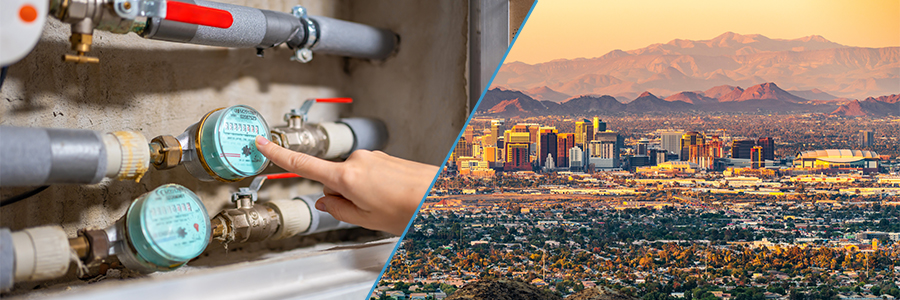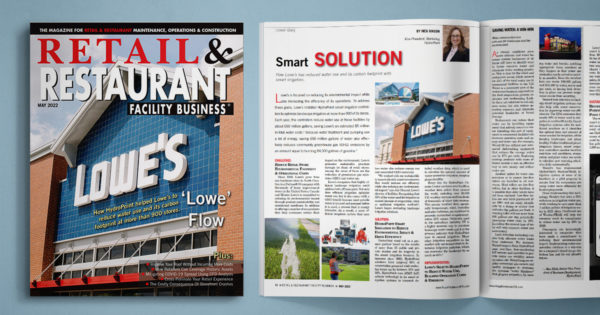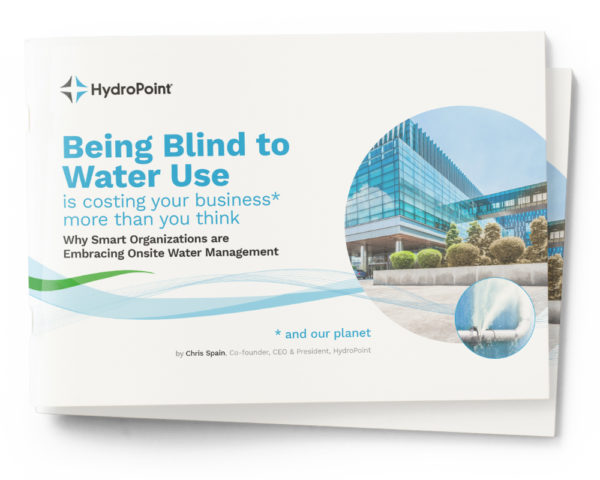
Soaring water rate hikes in four West Coast and Southwest cities have been set in motion– beginning in 2025– and will continue to rise over the next several years. Water districts in San Diego are about to be slammed with an unexpected 40% rate hike over the next few years by the San Diego County Water Authority. The increase will affect 87,000 customers. Water districts who rely on wholesale drinking water from the San Diego Water Authority call it “unprecedented,” given the water authority has secured reliable water supplies through fixed take-or-pay contracts, including water from the Colorado River and desalination plants.
“Over the next three years, we’re projecting the need for some significant rate increases to maintain the water supply reliability for our region”
Source: Mike Lee, Director of Public Affairs, County Water Authority
According to Lee, amounts the Water Authority charges to local agencies must increase 39% over the next three years, including a hike between 16% and 22% in 2025, to ensure a steady water supply during drought years– even though today the region’s reservoirs are full, following two wet winters and conservation efforts.
“Demand has actually dropped below the point of what their take-or-pay contracts are,” notes Olivenhain Municipal Water District General Manager, Kimberly Thorner. “San Diego currently has more water than it needs, but the rates still have to go up to keep the Water Authority sustainable.” To reduce the financial burden on customers, district board members are exploring budget cuts in areas such as delaying hiring positions, freezing current positions, delaying non-critical projects, and selling some property to offset rates.
Up the coast in San Francisco, the San Francisco Public Utilities Commission (SFPUC) has approved a 28% rate increase over the next 3 years. In early 2023, water and sewer rates in San Francisco were projected to increase by a whopping 90% over the next 10 years. But in November, the SFPUC provided a chart that projected average monthly water and sewer bills will actually rise 116% over the next 10 years—26% higher than the projected 90% increase.
The SFPUC is now seeking approval for a 10-year budget plan that will drive rate increases for many years into the future. Not addressed in the 10-year plan are any plans for alternative water supplies other than the Tuolumne River, which supplies a vast majority of the city’s water, and where salmon counts. In 1985 the river measured in the tens of thousands. Today it measures significantly lower, in the hundreds. In 1998, voters passed Measure H, freezing utility rates. As a result, the SFPUC stopped investing in necessary maintenance, which now is a primary driver of today’s massive budget plans.
The SFPUC projects that the current average single-family home’s monthly water and sewer bill of $142.00 will more than triple to $436.00 a month in 20 years.
Source: San Francisco Examiner
In the Southwest, The City of Phoenix bumped up water rates by 6.5% in October 2023. That rate was raised another 6.5% this year, and a third increase of 13% is coming in 2025. Water rate increases in the desert Southwest have been ongoing the past 5 years as Phoenix customers continue to fight an ongoing megadrought. Substantial rate increases have been proposed by the Phoenix Water Services Department to meet rising costs. An increase of the Stormwater Excise Tax is also being requested due to new requirements for preventing pollution from entering waterways. In order to encourage water conservation, the proposal also includes changing the water allowance structure for customers.
Over in Houston, residents continue to wait for Mayor John Whitmire to announce his water bill improvement plan as they pay an average 9% more on already high water bills that range from hundreds to thousands of dollars. This year’s rate hike is part of a plan passed in 2021 that put in motion 5 years of rate increases that would end in 2026, to help the growing city make repairs and expand the system. Since taking office this year, there’s been no announcement about the water bill relief plan the mayor has been talking about.
In all four regions, from West Coast to Southwest, even 10% savings on volume will yield better ROI with upcoming water rate increases. Some increases are even more punitive with tiered irrigation usage rates.
Powerful, cloud-based Smart Irrigation utilizes sophisticated automation technology to manage single, light commercial properties or hundreds of sites. Smart Irrigation Controllers can significantly reduce water waste to save money, irrigating only when necessary, based on site-specific data from the ET Everywhere weather service– the most precise, high resolution weather data available to create specific plant schedules. Soil Moisture Sensors use patented technology to save money by reducing water usage up to 62% or more over traditional irrigation methods. Buried deep in the root zone where it matters most, these ultra-sensitive sensors can measure volumetric soil moisture changes of less than 0.1%.
With water rates increasing substantially during times of ongoing megadrought conditions, there is urgency to protect our fast-diminishing water resources with Smart Water Management in all sectors– including residential, commercial industry and agricultural. Smart Water Management will not only dramatically reduce water use, it will also save significant money on those skyrocketing water bills.
Water Conservation is a Win-Win for Wendy’s
Since implementing this technology, Wendy’s has seen a 50% reduction in irrigation water use, while tracking to save more than one million gallons of irrigation water in 2021 alone.
Guide: How to Overcome Water Blindness with Smart Water Management
No commercial property is immune to water blindness. But failing to address it can be devastating.
Leak Detection in Your Irrigation System: 8 Signs Not to Ignore
Here are 8 of the most obvious signs that anyone can spot with the naked eye that something is leaking or has broken beneath the ground surface.




